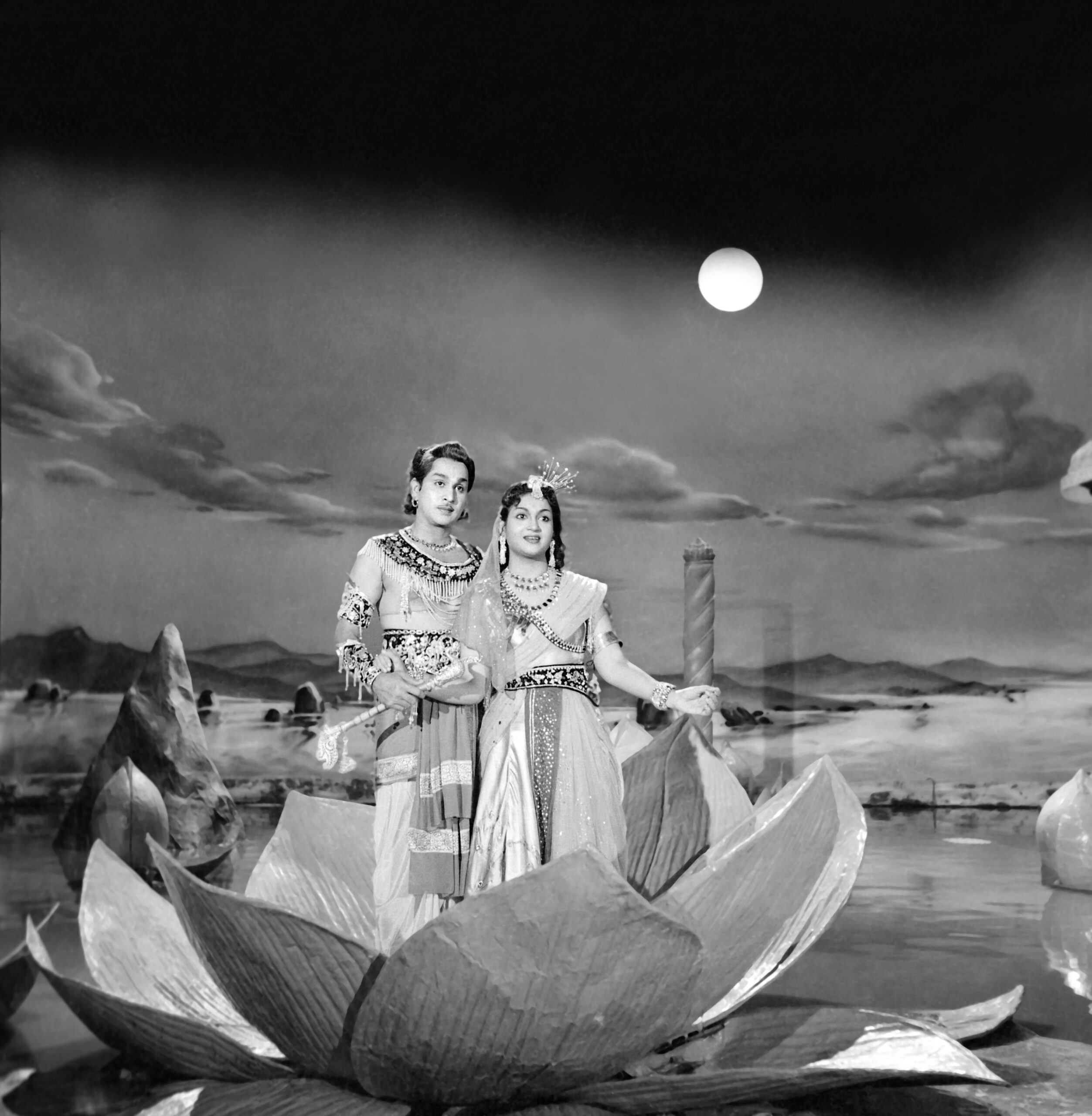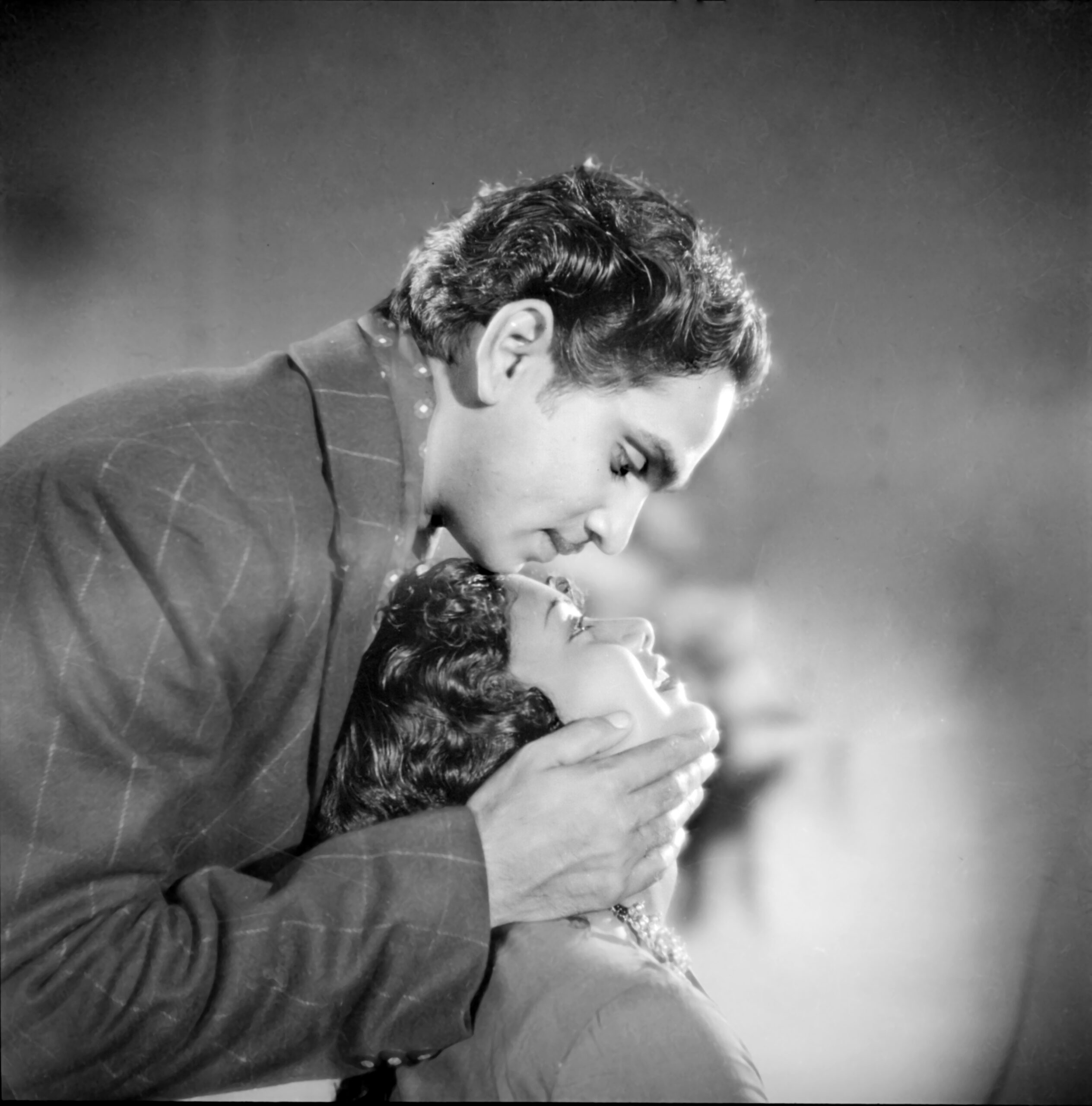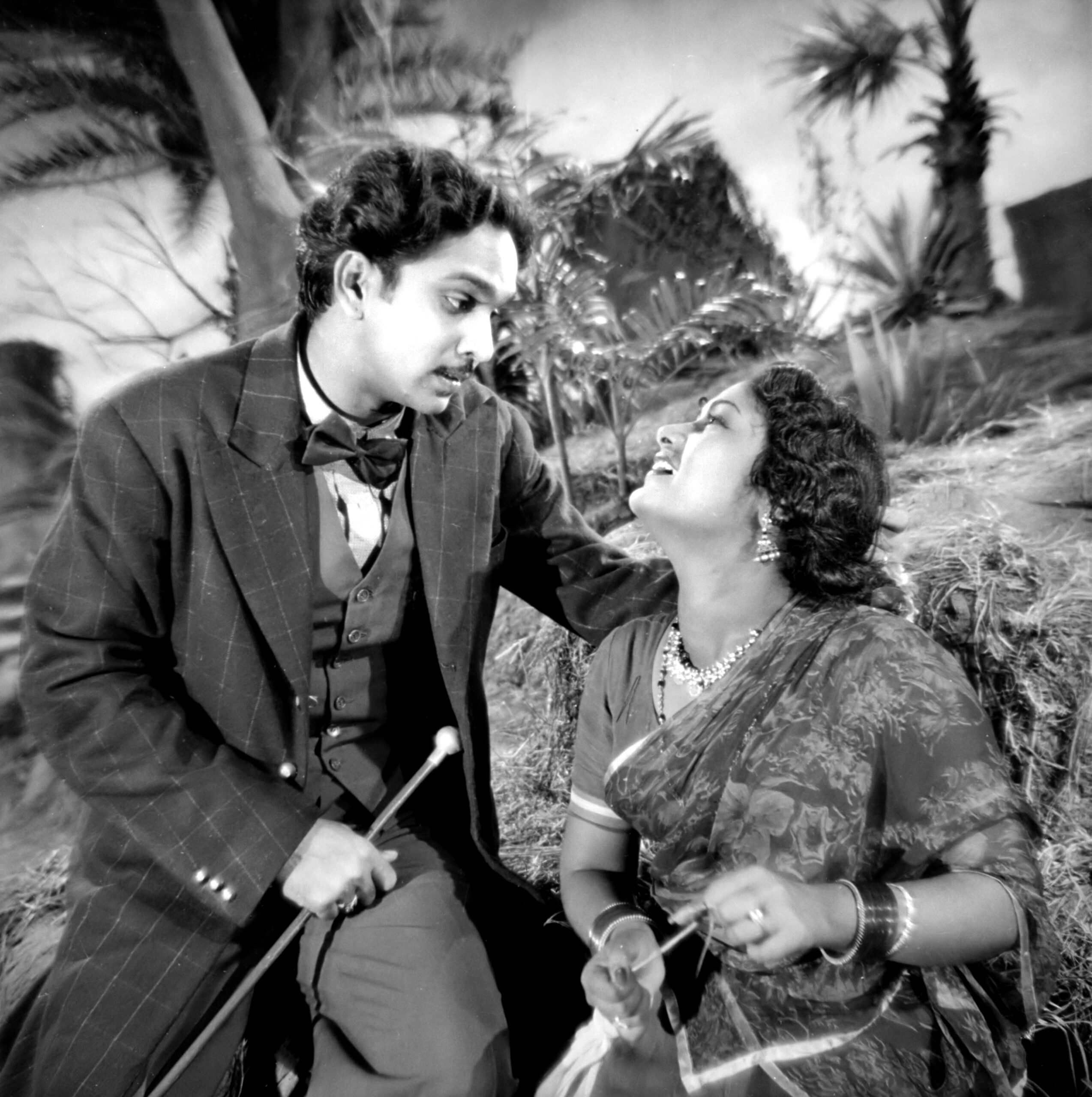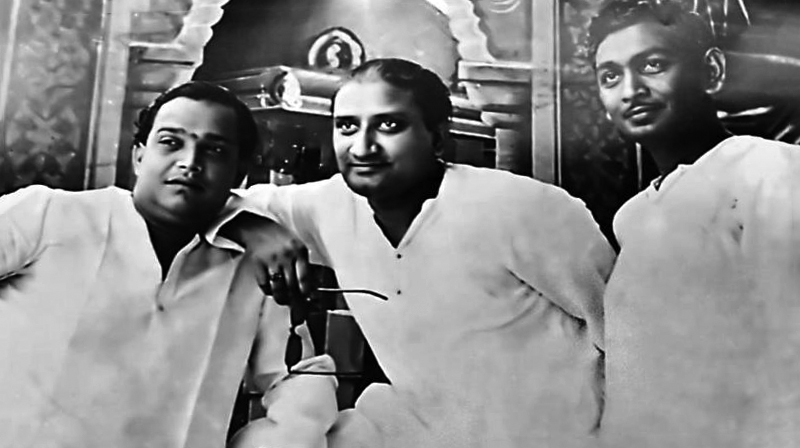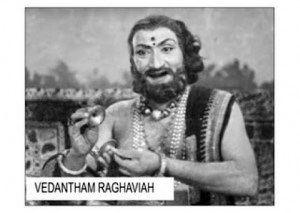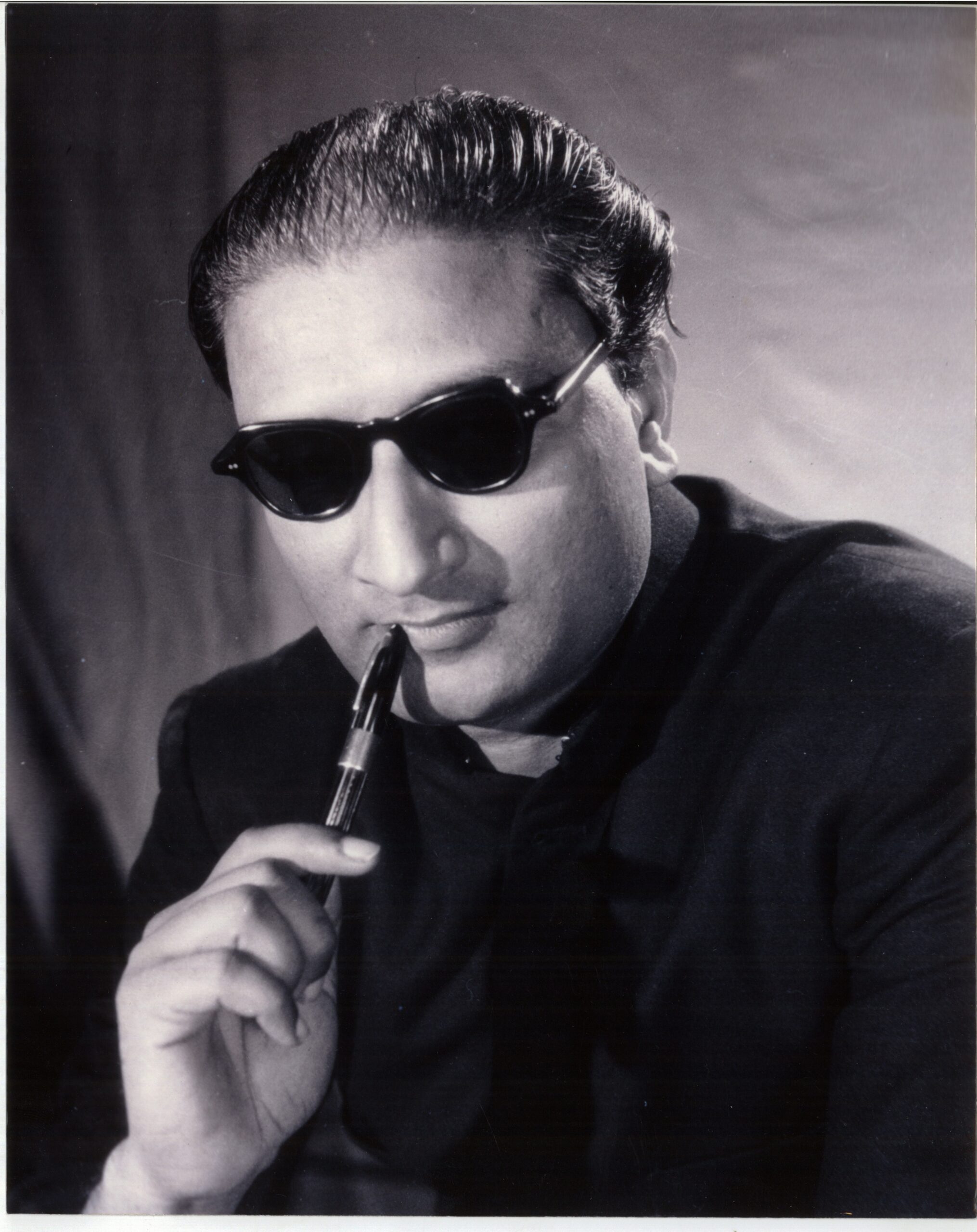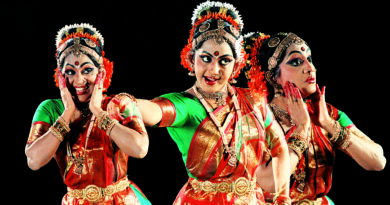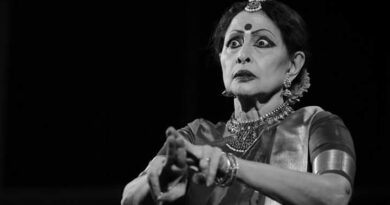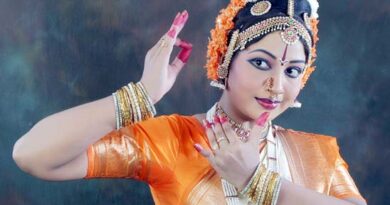Bharata Kala Prapoorna Vedantam Raghavaiah (1919-1971)
Text By: Paul Nicodemus
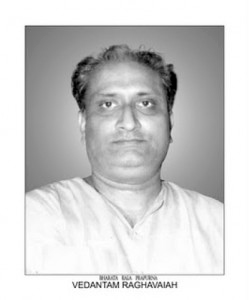
Vedantam Raghavaiah is a highly distinguished and towering personality among the Kuchipudi practitioners, who earned immense fame as a versatile artist with his performing, choreographing and directorial skills. Raghavaiah was the eldest son born to Vedantam Ramayya and Annapurna on June 8, 1919.
As a child, Raghavaiah played important roles in several Yakshaganas and earned distinction as a versatile and unique artist. He began his artistic career under the tutelage of Chinta Venkata Ramayya, known as the Yakshagana Pitamaha. He was taught not just to dance but to play music to accompany his master. The born artist, however, did not need much time to bloom; and, by his seventh year, Raghavaiah was playing the key roles of child characters such as Prahalada, Kusa or Lava, Lohitasya, Dharmangada etc. He was highly appreciated for all his roles by the audience. On one occasion of celebrating Seeta Rama Kalyanam, the dance troop of Chinta Venkataramayya played Prahlada Yakshaganam on three consecutive nights. Raghavaiah, who played Prahlada, stole the entire attention of the audience with his superb expression of emotions and melodious singing of the traditional music. The District Collector, an Englishman, was so impressed with the performance of the child Raghavaiah that he presented an expensive suit and a gold medal, both having the royal emblem. That was the first performance of Raghavaiah and the fact that he was just seven years old at that time illustrates the talent he had. Beginning his career with such unique recognition, Raghavaiah performed as a child artist till his fifteenth year and earned about thirty gold medals.
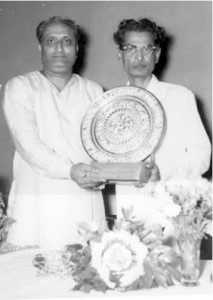
In his teens, Raghavaiah played roles such as Seeta, Chandramati, Leelavathi in addition to his well-known roles of Usha, Sasirekha and Mohini. There was no looking back, and Raghavaiah went on to earn the highest distinction along with awards and rewards throughout the country.
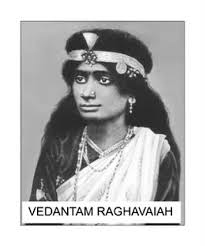
He was as distinguished in portraying female roles, as in his male roles of Krishna, Rama and Harischandra. The role, big or small, did not matter when Raghavaiah was playing the character. He would grab all the attention of the audience. In addition to this, he was unparalleled at nattuvangam and sutradharana. Raghavaiah’s distinction lies in his ability to play different roles in dance dramas, in gathering his contemporary artists and directing them on the stage as also in giving solo dance performances.
His initiation into the cine field happened through Gudavalli Ramabrahmam. Raghavaiah danced in Mohini Rukmangada and Raitu Bidda, which were produced in Madras, and this provided him opportunities to play major roles in Mayalokam and Garuda Garvabhangam, which established him as a cine personality. His dance and action earned him name and he settled in Madras as a dance director in Telugu movies. If the Telugu movies in the next three decades had good dance items, the credit goes to the Kuchipudi choreographers, and particularly to Raghavaiah who introduced them to cine field after he settled in Madras. Raghavaiah earned very good name with his direction of dance items Gopika Krishna in Nagayya’s Tyagayya, a biopic of the great singer of Thanjavur, Tyagaraju. That established Raghavaiah as the best dance director and he was awarded Gandapenderam by Nagayya in the meeting held in Bandar to hail the success of the movie Tyagayya.
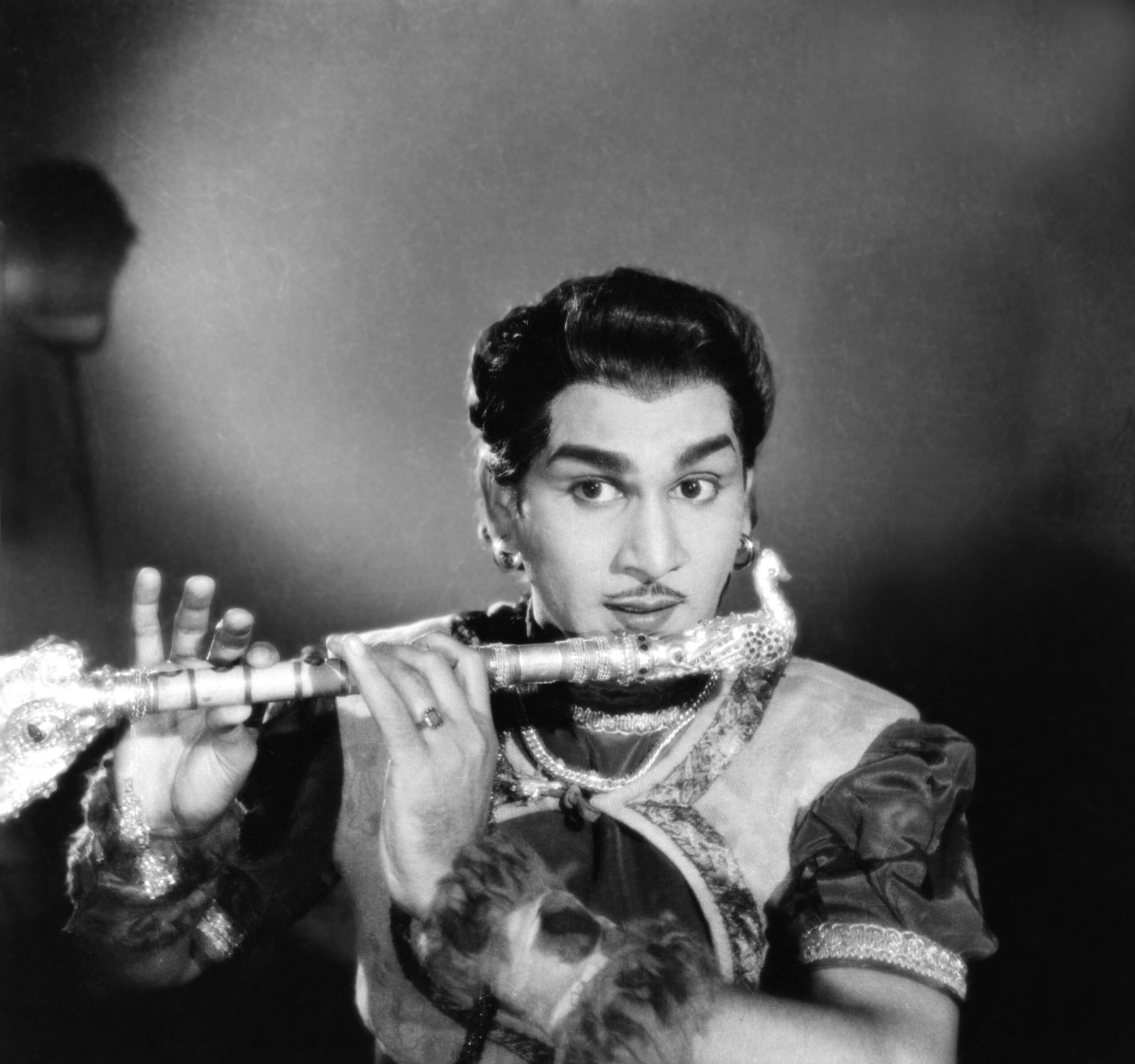
Raghavaiah continued dance direction and became a distinguished artist in Telugu movies. With an experience of composing dance dramas on stage, directing movies was a cakewalk for him. He directed a number of hit movies such as Devadasu, Chiranjeevulu, Suvarna Sundari, Swarna Manjari, Sakkubai, Adabratuku etc. His expertise in music, dance, literature, drawing and painting was recognized by the Andhra Pradesh Sangeetha Nataka Academy and he was honoured with “Bharat Kala Prapoorna” in the All India Dance Festival which he chaired in 1964. That title earned world-wide fame for Raghavaiah.
He directed 36 films including Telugu, Tamil, Kannada and Hindi languages and was the dance director for 22 films. His Devadasu earned him a place as one of the best directors in the Telugu cinema field.
Though Raghavaiah achieved more than a person could in one lifetime, his early death at the age of fifty two was certainly a great loss to the film industry and more to the Kuchipudi dance form. It was not only a loss to the hamlet of Kuchipudi but also to the entire nation.
Vedantam Raghavaiah Centenary Celebrations
2019 is the Centenary Year of one of the most renowned Telugu cinema directors and a Kuchipudi doyen, Bharata Kala Prapoorna Vedantam Raghavaiah. Born into a hereditary family of Kuchipudi practitioners, Raghavaiah’s rise as a well-known female impersonator in the Kuchipudi Yakshaganas, then as a dance director and a full-fledged film director was eventful, as he left an indelible mark in the chosen roles and fields.
Hence, three organisations, i.e., Art India Foundation, Hyderabad, Lasyakalpa Foundation, and Bhagavatamelam Kuchipudi, are collaborating with the department of culture, Telangana, to organise this event at Ravindra Bharati, Hyderabad, on December 22, 2019. The photo exhibition will be inaugurated on December 20, 2019 and will be open for public viewing till December 22, 2019.
The event will include revisiting his works and also celebrate his contribution through the release of a book, a photo exhibition, screening of bits from his choreographies and directed films with a narrative and recreation of three or four of his choreographed numbers on stage and a first day postal cover in his honour. The book entitled “Celebrating Life – A collection of writings, photographs and remembrances on Vedantam Raghavaiah” edited by Prof. Anuradha Jonnalagadda, with articles on different facets of Raghavaiah, contributed by Dr Katyayani Ganti, VAK Ranga Rao, Tanikella Bharani, Ravikonadala Rao, DSV Sastry, and reprinting old articles on him by the Dadasaheb Phalke awardee Akkineni Nageswara Rao, Bhagavatula Ramakotayya and others, and, Raghavaiah’s own writings and interviews, and lists of his films and rare photos of him which are unearthed from several archival sources etc.

